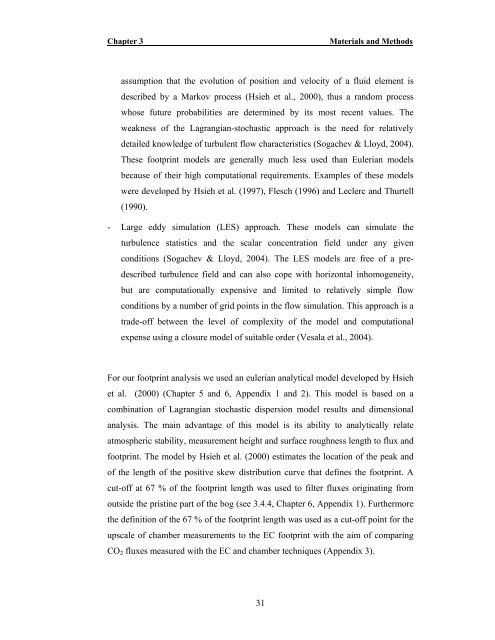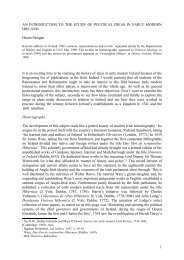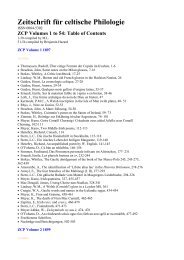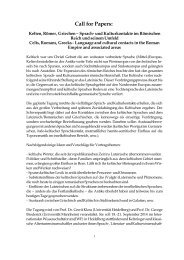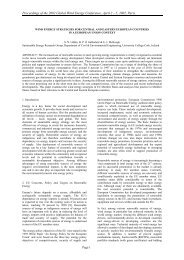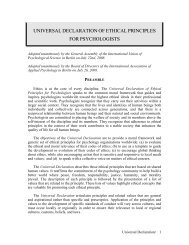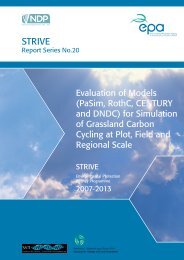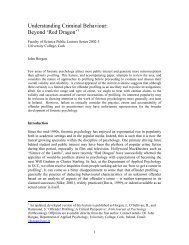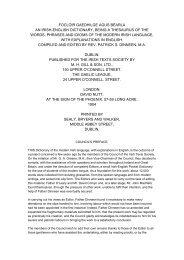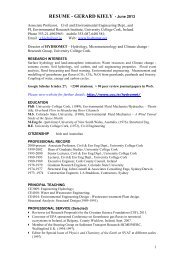PhD Thesis, 2007 - University College Cork
PhD Thesis, 2007 - University College Cork
PhD Thesis, 2007 - University College Cork
You also want an ePaper? Increase the reach of your titles
YUMPU automatically turns print PDFs into web optimized ePapers that Google loves.
Chapter 3<br />
Materials and Methods<br />
assumption that the evolution of position and velocity of a fluid element is<br />
described by a Markov process (Hsieh et al., 2000), thus a random process<br />
whose future probabilities are determined by its most recent values. The<br />
weakness of the Lagrangian-stochastic approach is the need for relatively<br />
detailed knowledge of turbulent flow characteristics (Sogachev & Lloyd, 2004).<br />
These footprint models are generally much less used than Eulerian models<br />
because of their high computational requirements. Examples of these models<br />
were developed by Hsieh et al. (1997), Flesch (1996) and Leclerc and Thurtell<br />
(1990).<br />
- Large eddy simulation (LES) approach. These models can simulate the<br />
turbulence statistics and the scalar concentration field under any given<br />
conditions (Sogachev & Lloyd, 2004). The LES models are free of a predescribed<br />
turbulence field and can also cope with horizontal inhomogeneity,<br />
but are computationally expensive and limited to relatively simple flow<br />
conditions by a number of grid points in the flow simulation. This approach is a<br />
trade-off between the level of complexity of the model and computational<br />
expense using a closure model of suitable order (Vesala et al., 2004).<br />
For our footprint analysis we used an eulerian analytical model developed by Hsieh<br />
et al. (2000) (Chapter 5 and 6, Appendix 1 and 2). This model is based on a<br />
combination of Lagrangian stochastic dispersion model results and dimensional<br />
analysis. The main advantage of this model is its ability to analytically relate<br />
atmospheric stability, measurement height and surface roughness length to flux and<br />
footprint. The model by Hsieh et al. (2000) estimates the location of the peak and<br />
of the length of the positive skew distribution curve that defines the footprint. A<br />
cut-off at 67 % of the footprint length was used to filter fluxes originating from<br />
outside the pristine part of the bog (see 3.4.4, Chapter 6, Appendix 1). Furthermore<br />
the definition of the 67 % of the footprint length was used as a cut-off point for the<br />
upscale of chamber measurements to the EC footprint with the aim of comparing<br />
CO 2 fluxes measured with the EC and chamber techniques (Appendix 3).<br />
31


